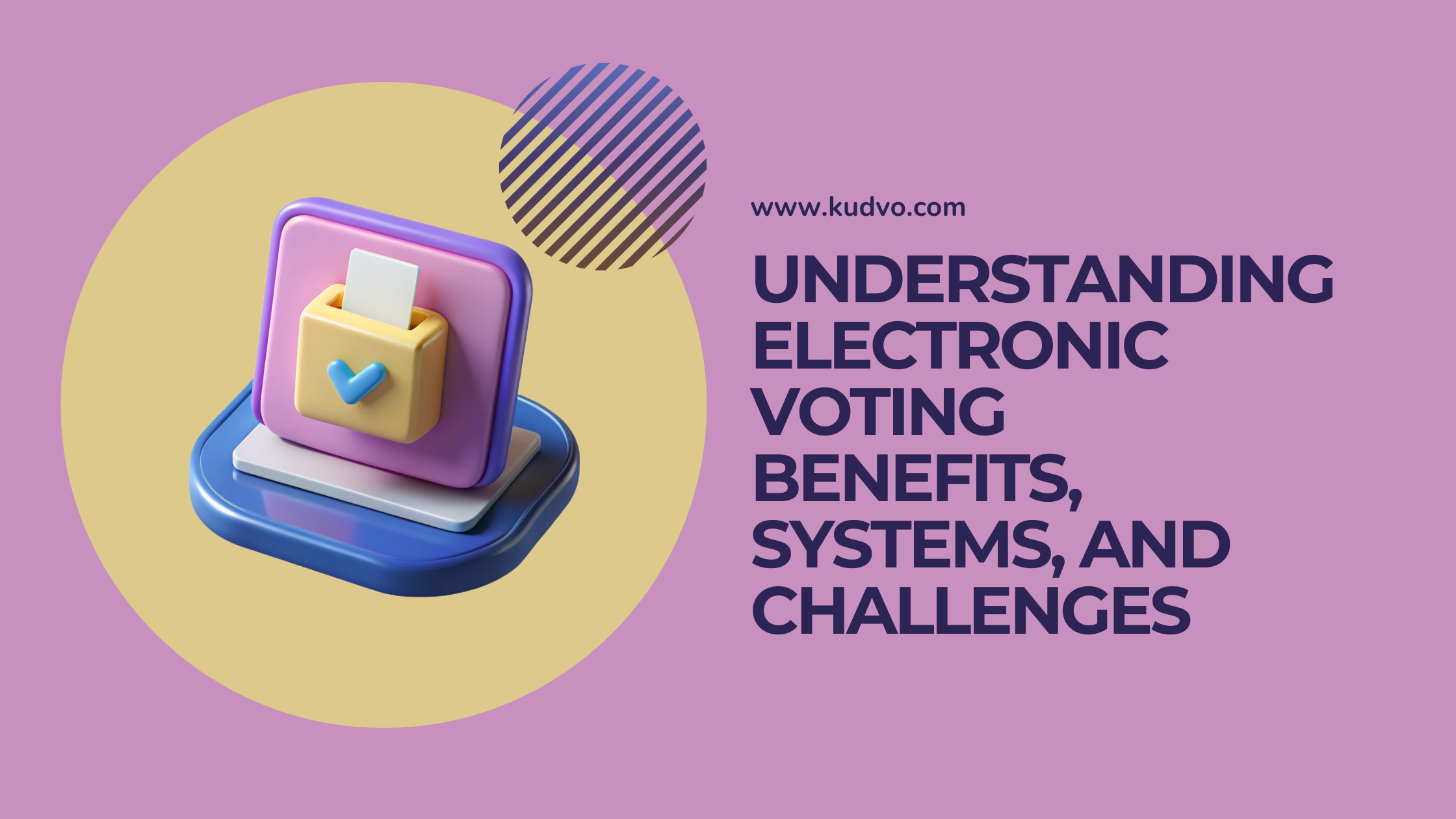Understanding Electronic Voting: Benefits, Systems, and Challenges
Introduction
Can we trust technology with democracy?
In an age where everything from banking to dating happens online, voting—the cornerstone of democracy—is also going digital. Electronic voting (or e-voting) promises speed, accessibility, and modernization. But it also raises important questions about security, transparency, and fairness.
This blog post unpacks what electronic voting really means. You’ll learn about the different types of systems used, the key advantages of going digital, and the critical challenges that governments and voters face. Whether you're a curious citizen or a policymaker, this post will help you navigate the future of elections.
(This blog is brought to you in collaboration with www.kudvo.com, your go-to source for digital innovation insights.)
1. What Is Electronic Voting?
Electronic voting refers to the use of electronic systems to cast and count votes. It can take several forms:
Direct Recording Electronic (DRE) machines – Used at polling stations, these allow voters to make selections using a touchscreen or button interface.
Optical Scan Systems – Voters fill out a paper ballot which is then scanned electronically.
Internet Voting – Voters cast their ballot remotely using an online portal, often used in pilot programs or for overseas voters.
Countries like Estonia have pioneered full-scale internet voting, while others use a mix of traditional and electronic methods. The goal? Improve efficiency, accessibility, and accuracy.
2. Key Benefits of Electronic Voting
Electronic voting comes with a host of potential advantages:
✅ Faster Results
Vote counting is automated, reducing the time between polls closing and results being announced.
This helps maintain public confidence and speeds up the decision-making process.
✅ Improved Accessibility
Visually impaired and physically challenged voters can use accessible interfaces.
Internet voting helps citizens abroad or in remote areas participate more easily.
✅ Lower Operational Costs (Long-Term)
Once infrastructure is in place, fewer paper ballots and manual labor are needed.
Over time, this can reduce the costs associated with running elections.
✅ Error Reduction
Electronic systems minimize human errors in counting and ballot validation.
Voters get real-time feedback if they make a mistake or miss a vote.
3. Types of E-Voting Systems in Practice
Let’s look at how different systems have been adopted globally:
Estonia – The Internet Voting Pioneer
Since 2005, Estonia has allowed citizens to vote online using a secure ID card system. Over 44% of voters used this option in recent elections.
Brazil – DRE Success Story
Brazil uses Direct Recording Electronic machines across the country. Results are available within hours after polls close, even in remote areas.
The U.S. – A Patchwork Approach
The U.S. uses a combination of paper ballots, optical scan systems, and DRE machines, depending on the state. While some areas are pushing for more tech, others remain cautious.
India – Electronic Voting Machines (EVMs)
India uses EVMs in all elections. These machines are praised for being simple, tamper-resistant, and cost-effective in a country with over 900 million voters.
4. Challenges and Concerns
Despite its advantages, electronic voting isn’t without risks.
🔒 Security Threats
Hacking, malware, or denial-of-service attacks can threaten election integrity.
Even the perception of vulnerability can damage trust.
🕵️♂️ Transparency & Auditability
Paper-based systems leave a physical audit trail.
Fully electronic systems must include secure verification methods like Voter-Verified Paper Audit Trails (VVPATs) to ensure transparency.
💡 Digital Divide
Not all voters have equal access to digital tools or the internet.
Training and awareness campaigns are crucial to prevent disenfranchisement.
👥 Trust in the System
Public trust is vital. Any doubts—whether justified or not—can lead to misinformation, low turnout, or disputes.
Conclusion
Electronic voting holds exciting potential to make elections more efficient, inclusive, and modern. Countries like Estonia and Brazil show it can work when done thoughtfully. But to fully embrace digital democracy, we must balance innovation with transparency, security, and public trust.
As we move forward, the key question isn't just can we vote electronically—it's how we ensure every vote truly counts.
👉 Want to stay informed on digital trends like this? Visit www.kudvo.com for more insights into the future of tech and democracy.
